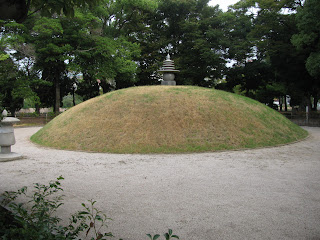We walked around and saw many things in the park that were donated for the Atomic Bomb victims, such as fountains, monuments, a Bell of Peace, the statue of the A-Bomb Children and trees, a bell, and a Peace Flame which burns in front of the Memorial Cenotaph. The statue of the A-Bomb Children was inspired by Sadako, a girl dying from radiation poisoning who believed that if she folded 1,000 paper cranes that she would recover. She died folding 664 cranes. Children still fold paper cranes in her memory and the statue in the park is surrounded by millions of paper cranes. They even had a paper crane that you could take at the museum on your way out.This flame must never be extinguished until all nuclear weapons are abolished. We also saw the A-Bomb Dome, which is the burnt and skeleton of the Industrial Promotion Hall. This building is a reminder of the major destruction.
We walked around Memorial Hall, which shares the names and photographs of the A-bomb victims. The hall was made in order to share the truth of what happened as well as to teach the young generation to build a peaceful world free from nuclear weapons. We watched and read memoirs written by survivors and victim’s families and recorded testimonies. Also, we saw things that were burnt from the atomic bombing, such as a little boy’s bicycle, bottles, kitchenware, walls and pieces of buildings, clothing, etc.
We also walked around the Peal Memorial Museum which was also an eye opener of the damage to the city and people. You could see a model of what the city looked like before and after the bombing. The museum was very informational and explained all about atomic bombs and the use of them. There was also a wall that stuck out to me…it had hundreds of letters from Japan to other countries advising them to never again use another atomic bomb because of the damage it has once caused. We learned that 400,000 people, half the population were killed from the atomic bomb. About 80,000 were killed instantly. Almost the entire city was destroyed, yet with the model you can see the major improvements over time. Along with the Japanese, there were 20,000 Koreans who had been killed in Japan because they had been brought to Japan as a slave workforce during WWII.
Obviously, Japan has been extremely affected by this type of weapon and puts a lot of effort in trying to stop the world from using it ever again. There was a gift shop that had t-shirts with logos about freedom and about anti-A-bombs.
It was a depressing but very educational morning for us in Hiroshima. Since this was the main site that we had come to the city to see, before lunch we were off to our next destination: Miyajima.
























No comments:
Post a Comment